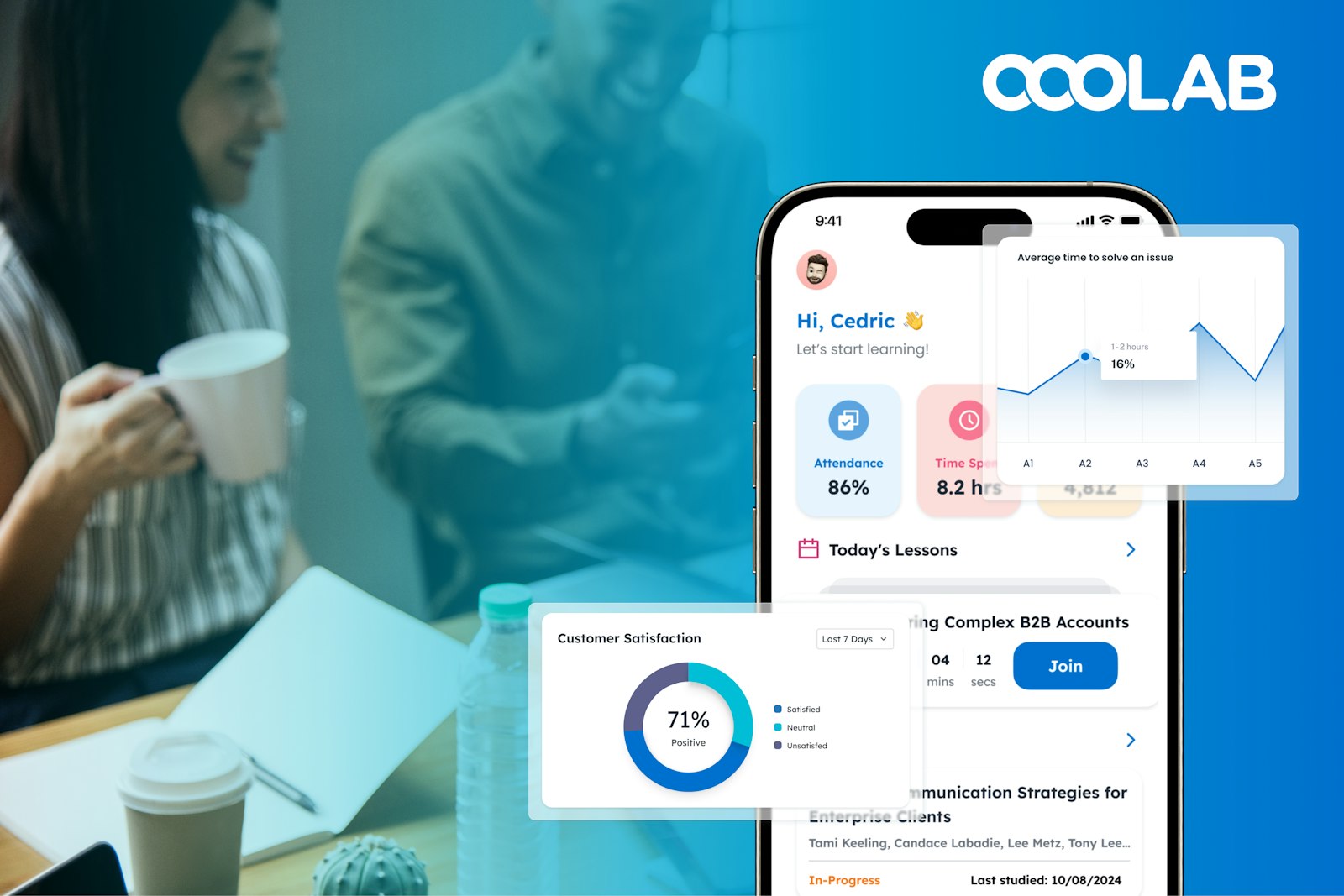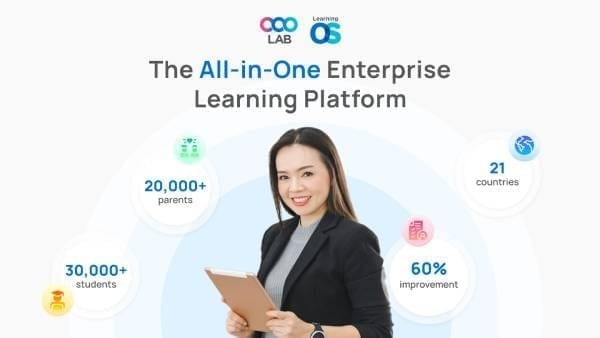

In today’s increasingly digital world, learning and development have shifted dramatically. Enterprise Learning Management Systems (LMS) are now a crucial tool for employee training, development, and compliance in many organizations. But as mobile devices have become the dominant tool for personal and professional use, enterprises must adapt their LMS platforms to ensure mobile accessibility. This blog will dive into the significance of mobile accessibility within enterprise LMS, the challenges organizations may encounter, and strategies to overcome them.
Mobile accessibility in an LMS ensures that employees can access learning materials irrespective of their location, physical ability, or the type of device they use. It’s particularly important for employees with disabilities who rely on assistive technologies or optimized interfaces to engage with content. Inaccessible LMS platforms can limit learning opportunities, which not only impacts productivity but also violates legal standards, like the Americans with Disabilities Act (ADA).
By making an LMS mobile-friendly, organizations can foster a more inclusive work environment, ensuring all employees have equal access to learning and development opportunities. This inclusivity strengthens employee engagement, leading to higher retention rates and a more diverse, capable workforce.
>>> Read more: Common challenges when implementing an Enterprise LMS
>>> Read more: Steps to implement an Enterprise LMS
>>> Read more: Enterprise LMS - revolutionzing corporate training and development
>>> Read more: What is hybrid learning?
>>> Read more: Customization options for Enterprise LMS
Book Free Demo with us. Bring your Training and Learning to a new height with LearningOS.
The COVID-19 pandemic accelerated the trend of remote and hybrid workforces. Employees are no longer confined to a single office space; they are accessing company resources from home, on the go, and even across different time zones. Ensuring that your LMS is mobile-accessible means that employees can complete learning modules, participate in discussions, and access resources anytime, anywhere.
With mobile accessibility, learning becomes more flexible, which is key for boosting completion rates and increasing engagement. Employees are more likely to engage in training if they can do so from their mobile device, rather than waiting until they are at a desk. Flexibility is especially vital for sales teams, remote workers, and those constantly on the move, helping them stay connected with learning opportunities without being tied to an office.
A mobile-optimized LMS enhances the overall user experience (UX). A well-designed mobile interface allows employees to navigate content easily and interact with multimedia elements such as quizzes, videos, and interactive exercises. A seamless mobile experience promotes learning retention and decreases frustration.
The adaptability of content to different screen sizes, resolutions, and mobile operating systems ensures that users don’t face barriers when learning on mobile devices. This can have a direct impact on productivity, as employees can quickly access necessary training materials or refreshers while tackling their daily tasks.
Many legacy LMS platforms were designed primarily for desktop use, making them cumbersome or even unusable on mobile devices. Businesses may face technical challenges when retrofitting desktop-focused systems for mobile compatibility. Interactive features, such as drag-and-drop quizzes or multimedia components, may not work smoothly on all mobile devices.
Compatibility across a range of mobile devices and operating systems further complicates mobile accessibility. For instance, an LMS may perform well on an Android phone but struggle on an iPhone due to differences in system architecture. These challenges require careful consideration during the design and deployment stages.
>>> Read more: Web Content Accessibility Guidelines (WCAG)
>>> Read more: Mobile Learning and the Rise of Mobile LMS
>>> Read more: ADA Compliance and eLearning: What You Need to Know
With mobile devices, particularly in Bring Your Own Device (BYOD) environments, security risks increase. Employees accessing sensitive company data on personal mobile devices may expose that data to external threats, such as unsecured networks, malware, or theft.
Companies need to ensure that their LMS adheres to robust security protocols, such as multi-factor authentication, encryption, and secure mobile connections. Maintaining the same level of security for mobile users as for desktop users is crucial in avoiding breaches that could compromise both employee and organizational data.
Another major challenge in implementing mobile accessibility is the cost associated with redesigning or upgrading an LMS for mobile use. Enterprises with large workforces or those operating across multiple regions may require significant customization to meet diverse needs.
Scalability is also a concern. A mobile-friendly LMS must be able to handle high volumes of users without sacrificing speed or functionality. Balancing cost with the need for effective mobile learning solutions requires careful planning and often collaboration with LMS vendors.
Designing LMS platforms with mobile users as the primary audience, rather than an afterthought, ensures better outcomes. Mobile-first design principles emphasize simplicity, ease of navigation, and optimized content layout for smaller screens. With mobile-first LMS platforms, users experience an intuitive interface and improved navigation.
Starting with mobile design also allows enterprises to avoid the common pitfalls of retrofitting desktop platforms, such as broken interactive elements or slow load times. This forward-thinking approach ensures a consistent experience across devices and reduces maintenance efforts in the long term.
Adherence to accessibility standards such as the Web Content Accessibility Guidelines (WCAG) and ADA regulations is crucial for ensuring that mobile LMS platforms meet the needs of all employees, including those with disabilities. These guidelines outline best practices for making digital content accessible to individuals with visual, auditory, cognitive, and motor impairments.
By following these standards, enterprises not only foster inclusivity but also protect themselves from potential legal issues. LMS platforms must support features like screen readers, closed captioning, and keyboard navigation, ensuring employees can engage with content regardless of their abilities.
Responsive design is essential for delivering a consistent user experience across different devices. It ensures that content automatically adjusts based on the screen size or orientation of the device being used, whether it’s a smartphone, tablet, or desktop computer.
With responsive design, administrators don’t have to create multiple versions of the same content. Instead, they can build content once and trust that it will render appropriately across all devices, streamlining content management and updates.
Mobile accessibility is not a one-time effort. Continuous testing and gathering feedback from employees is key to maintaining a mobile-friendly LMS. Regular testing across various devices and browsers helps ensure the LMS works as intended in different scenarios.
Gathering feedback from employees can reveal pain points and highlight areas for improvement, allowing organizations to make informed decisions when updating their LMS.

Book Free Demo with us. Bring your Training and Learning to a new height with LearningOS.
Mobile accessibility in enterprise LMS platforms is no longer a luxury – it’s a necessity. The benefits of a mobile-friendly LMS, such as improved inclusivity, employee engagement, and productivity, make it a worthwhile investment for any business. While challenges such as technical barriers, security concerns, and cost may arise, adopting a mobile-first approach and leveraging best practices can help overcome these hurdles.
As mobile devices continue to play an increasingly central role in the workplace, businesses must ensure that their LMS platforms are fully optimized for mobile use. Doing so not only ensures compliance with accessibility regulations but also equips employees with the tools they need to learn and grow, anytime and anywhere.
At OOOLAB (pronounced 'uːlæb'), our mission is to make complex learning operations simple. We aim to positively impact the lives of over 1,000,000 learners and educators by the end of 2026.
OOOLAB's LearningOS provides educational institutions and corporate enterprises with an all-in-one solution to create and deliver engaging learning experiences.
We meet organizations' needs or support your growth. We provide undivided attention. We provide
Reach out to us at: Linkedin, FaceBook
FAQ
What are the main benefits of LearningOS
Our platform is easy to use and automates all aspects of your learning operations. It efficiently manages complex tasks, allowing you to concentrate on delivering exceptional learning experiences.
What main features does LearningOS offer?
Our all-in-one software solution combines a Content Management System, a Learning Management System, content authoring tools, and a mobile friendly Learner Portal.
Can your platform be used for corporate enterprises?
Absolutely! LearningOS is an Enterprise LMS is a great fit for corporate learning. In fact, we have clients with up to 700,000 employees using LearningOS! Upskill your workforce by creating and assigning interactive eLearning content while effortlessly tracking employee progress.
Who currently uses your platform?
Our platform is currently used by over 120,000+ learners, parents, and employees across 21 countries worldwide!
What types of content options are available on your platform?
We offer ready-to-go curriculums for various educational purposes or our expert design team can build a custom course for you. We can also upload your existing learning materials and enhance them digitally.
What is unique about LearningOS?
Our platform, designed by educators for educators, provides you with all the tools you need to scale. Build and promote your own hybrid and blended learning courses and save money on licensing fees by owning your own proprietary content.
How can I get started?
Schedule a meeting with our experts and we’ll talk about how our platform can address your unique challenges and help to grow your business.